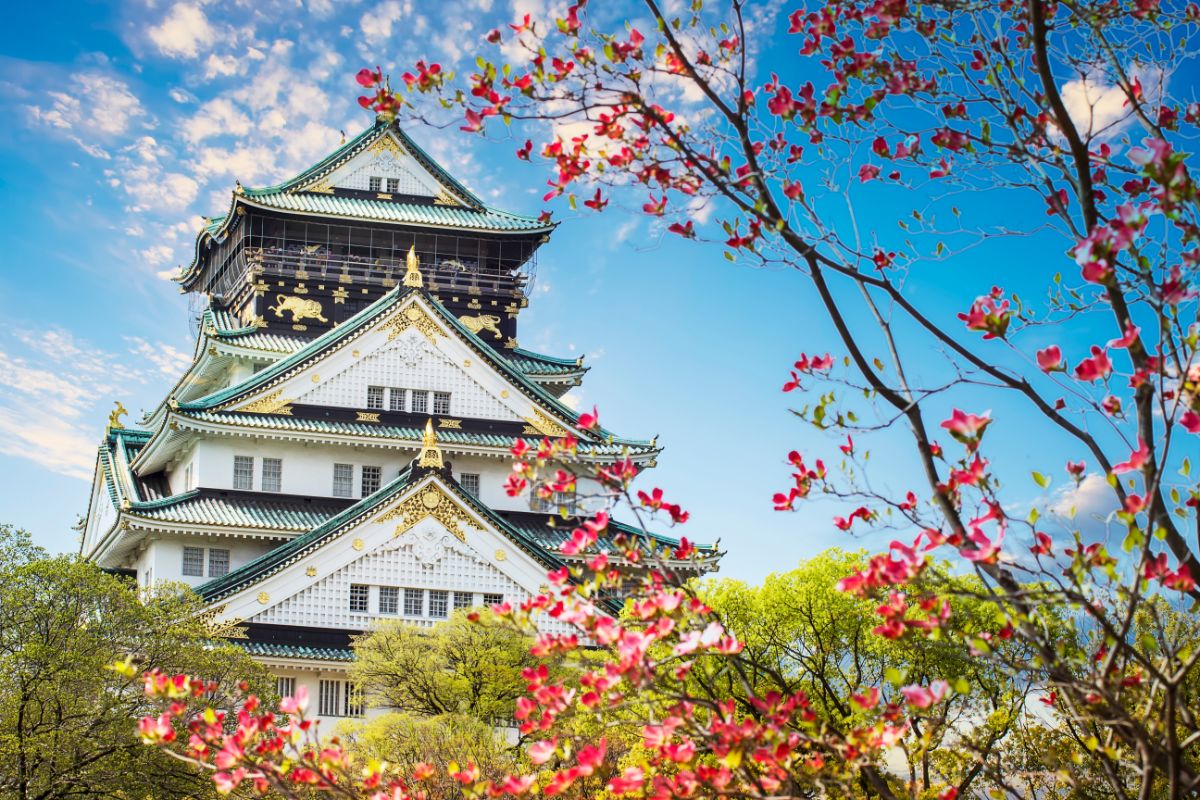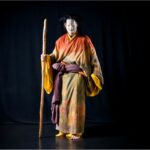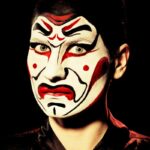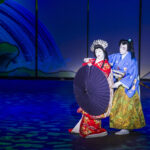Are you interested in learning about three instruments that are at the heart of kabuki performances? Yes? Well, you have come to the right place.

In this article we are going to talk about the shamisen, tsuzumi drum and wood clappers. Three instruments that kabuki could not be without.
While there are several other instruments associated with kabuki, none are more important than these three. Each one is essential to the musical tone that kabuki is known for.
So, without further ado, let us dive right in and check out these three amazing instruments.
1. Shamisen
The shamisen is an instrument with a long neck that does not have any frets. It is essentially a form of Japanese lute. They usually have a small body which has a square shape. This body is usually covered in cat skin, dog skin or snakeskin.
But there is far more to learn about this gorgeous instrument. So, without further ado, let us take a deeper look into what makes the shamisen such a fun and unique instrument.
What Is A Shamisen?
This instrument is very similar to what we know today as the lute but with the look of a banjo. The neck of the shamisen is just about thirty inches in length.
Its body is most often made using wood and will have a hide covering which is usually made from dog skin or cat skin. But when the shamisen was first made it was actually snake skin that was used.
A shamisen can be taken apart which made it the ideal instrument for entertainers to take with them as it was very easy to transport.
As time went on, there were several forms of the shamisen that came into being. As with anything, time caused this instrument to be developed.
Now there are three main types of shamisen which are as follows: The Futozao, the Hosozao and the Tsugaru.
The main differences between these three types of shamisen is how thick the body is. This small difference has an impact on the sound that this instrument makes.
What Is The History Associated With The Shamisen?
This musical instrument may have a huge impact on Japanese culture but it actually originated in China.
It was back in the sixteenth century that this instrument first came to the main island of Japan. Since then, it quickly became very popular. Initially it was used by geisha, street performers.
At the time it was considered to be an instrument of the lower class.
Soon after it became popular the shamisen was used in many forms of Japanese theater. For example some puppet theaters, bunraku and kabuki.
In kabuki plays the shamisen is most often used as a tool to set the scene. It is played to create background music.
Even in other forms of Japanese theater like bunraku the shamisen was used to accompany the narrator to create a more tense atmosphere.
When the nineteenth century came around this famous instrument became a classical concert instrument.
What Is The Terminology Associated With The Shamisen?
If you are not familiar with the shamisen you will probably not understand the terminology. It is for this reason that we have listed some of the most common words surrounding this beautiful instrument.
- Bachi – This term is essentially a large pick which is used to strike or pluck the three strings of a shamisen.
- Joruri – This term is essentially a narrative style which was used in bunraku puppet theaters.
- Gidayu – This term is essentially a narrative style invented by Takemoto Gidayu between the years of 1651 and 1714.
- Nagauta – This term is essentially a long, lyrical song and is often referred to as ‘naga-uta’.
- Minyo – This term is essentially a word that signifies that folk songs are going to be played. Min-yo is another word for ‘Minyo’.
- Hon-Choshi – This term is essentially a form of tuning the shamisen. Which is kind of solemn.
- Niagari – This term is essentially a form of tuning the shamisen. Which is kind of serene.
- San-Sagari – This term is essentially a form of tuning the shamisen. Which is kind of melancholic.
These are just a few terms which are associated with the shamisen. So, if you want to learn more words and terms associated with this instrument, make sure to do a little research. You are sure to uncover something new and interesting!
2. Tsuzumi Drums
The tsuzumi drum is a name for a family of two headed drums that have an hourglass shape or a waisted body.
There are several types of tsuzumi drums, the most popular are as follows: the ko-tsuzumi and the ō-tsuzumi. These two varieties are the ones that are most often used in kabuki theaters.
But there is far more to learn about this gorgeous instrument. So, without further ado, let us take a deeper look into it.
What Is A Tsuzumi Drum?
The tsuzumi drum is a struck percussion instrument. It is also one of the more popular instruments used in kabuki music.
These drums have a wooden body which is tucked between two skins that are stretched over each end and fastened over with iron rings. This is also held together using a cord which is known as shirabe.
This cord is attached to each of the metal rings on the skin of the drum.
The ko-tsuzumi version of this drum is held in the left hand by the shirabe and is then rested on the right shoulder. The grip will be changed on the shirabe while the drummer is performing with their right hand.
By playing like this there can be a wide variety of tones produced with this style of tsuzumi drum.
The ō-tsuzumi will be made using skins that have been dried before they are tied together tightly. These areas with hide will be held to the drummer’s left side and played with the right hand.
This drum has been designed to produce only once high-pitched sound, but the key can be varied depending on the alteration of the timbre and volume.
In kabuki performances there will be a lot of ko-tsuzumi players. All of them should be lined up along tiers on the stage.
An intricate rhythm known as chirikara-byōshi, which is created by these drums, played alongside the shamisen created the typical music of kabuki. The drums synced with the rhythm of the shamisen music typified in nagauta.
What Is The History Associated With The Tsuzumi Drum?
This drum was first introduced to Japan way back in the seventh century. Even today, this charming instrument has not lost its appeal.
While this drum is very popular in Japan it is thought that this drum actually originated in India. While it is not certain, it is believed that the name ‘Tsizumi’ was derived from Sanskrit.
3. Hyōshigi
If you have ever been to a kabuki show you will have heard that telltale clacking sound used to punctuate music or draw your attention to a scene or moment in the story.
This instrument is known as either a Hyōshigi or in plain English terms, a wooden clapper.
But there is far more to learn about this gorgeous instrument. So, without further ado, let us take a deeper look into it.
What Is A Hyōshigi?
This instrument is essentially a struck idiophone which is most often used in traditional Japanese kabuki theaters as well as other types of theater like bunraku.
This instrument is essentially two pieces of bamboo or hardwood which are connected by a thin rope that is purely ornamental.
When this instrument is played they are either struck on the floor or against each other. This will create a sharp cracking sound. It is often used as a way to get the audiences’ attention on whatever is important.
But it can also be used as a way to coordinate cues, as well as a way to give stage directions to the actors. Different patterns and tunes used with these wood clappers to indicate different things.
Like any of the things we have mentioned above or when a segment has ended.
What Is the History Associated With The Hyōshigi?
It is nearly impossible to determine who created this instrument. Otherwise, known as wooden clappers, this instrument has been played throughout history in nearly every country in the world.
They have often been played or used during rituals, as a warning sound, to coordinate work, to signal, and even as a musical instrument. Archaeologists have even a small set of small ivory clappers in Egypt which dated back to 2000 BC.
Final Thoughts
We hope that you have enjoyed reading this article and learning about these fascinating and ancient instruments of Japan. There are a lot of different instruments which give kabuki a unique musical sound.
Each one is essential to the performance of a kabuki play and makes the experience as unique and amazing as it is today.
If you are interested in learning more about various topics in Japan make sure to check out some of our other articles. There are tons of articles on various topics which you are bound to find interesting.
- 16 Best Websites To Watch Japanese Movies With English Subtitles - May 11, 2023
- Is ZIPAIR The Best Airline For Traveling To Japan? - May 11, 2023
- Ryu Murakami Vs Haruki Murakami – Which One Should You Read? - May 11, 2023








